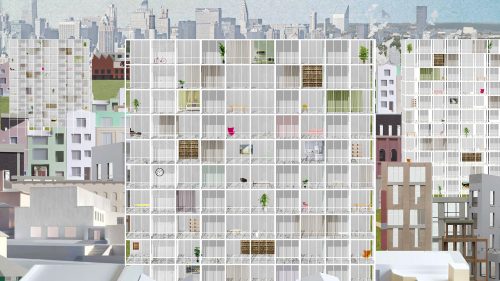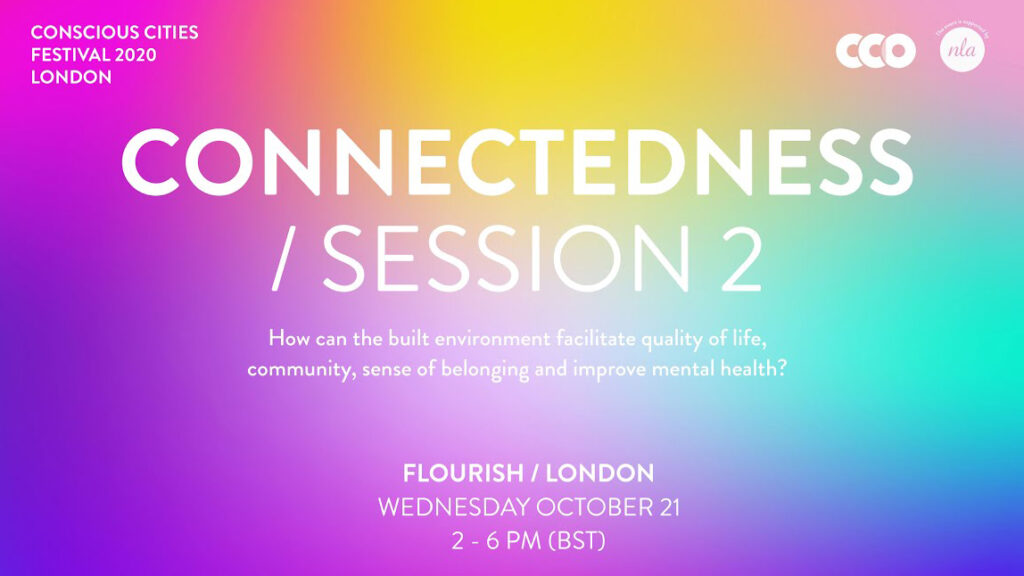Studies show that an individual’s ability to mobilize her social capital, as well as the presence of places that foster social cohesion within a neighbourhood, are key resources for coping with ecological, economic and health crises. How can we reduce inequalities of access to these resources between urban spaces, mobilize them in uncertain times, and better prepare our cities for future crises?
Inequalities in terms of social infrastructure influence the neighbourhood’s capacity to cope with crises.
In 1995, the city of Chicago was hit by a deadly heatwave. Two neighbouring areas, Auburn Gresham and Englewood, showed radically different mortality rates despite their similar demographics. In order to find out the causes, the American sociologist Eric Klinenberg studied the social infrastructure present in these two neighbourhoods.
In his book ” Palaces for the People,” Klinenberg defines social infrastructure as “the physical spaces and organizations that affect the way people interact.1 These physical spaces include public institutions such as libraries, schools, playgrounds, parks, sports fields, swimming pools – but also sidewalks, building yards, community gardens, green spaces.
“Organizations”, according to Klinenberg, refer to community organizations (civic or spiritual) as long as they are based in a physical place, as well as markets and certain businesses (cafés, restaurants, barbershops, bookshops, etc.).
Social infrastructure plays a key role in the ability of neighbourhoods to be resilient in the face of health, climate or economic crises, i.e. to absorb and recover from the shock. It is closely linked to contemporary issues of social isolation, crime, education and health. When it is well developed, the social infrastructure encourages contact, mutual support, and collaboration among friends and neighbours; when it is degraded, it inhibits social activity, leaving families and individuals to fend for themselves.
The Auburn Gresham neighbourhood, which benefited from a social infrastructure developed through many places and community organizations, recorded far fewer heat-related deaths than Englewood. Klinenberg demonstrates that the social infrastructure led to the establishment of mutual aid mechanisms between neighbours, and that some of these places open to all became vital shelters for a part of the population.
The current health crisis raises several questions: will the human consequences be greater in neighbourhoods with a fragile social infrastructure, reflecting a lower capacity to mobilize a social network in times of crisis? Furthermore, how can urban communities meet the challenge of mobilizing social resources in times of crisis, despite the fact that access to these physical spaces is restricted for health reasons in some parts of the world?
Access to social capital, a fundamental issue for individual resilience
The social infrastructure is indeed the physical support for the expression and mobilization of social capital. From a behavioural science perspective, social capital refers to the social resources available to individuals to support each other, help each other, or act together. It refers both to the social networks available (e.g. density and strength of social ties), and to the shared values and social norms within these networks (e.g. level of social trust, perceived reciprocity).
Research has long been interested in social capital because it plays a crucial role in the well-being of individuals and communities. At the individual level, it can be measured by indicators such as social participation (in a vote, an event, etc.), social trust, attachment to the neighbourhood or the sense of belonging to a community. The stronger the social capital of an individual or organization, the more involved it is in social dynamics, social groups and collective actions. Moreover, when social capital increases, the stress and the rate of psychiatric pathologies decrease, and physical and mental health improve.2 Epidemiologists have indeed established a robust relationship between social connections, health and life expectancy.3
Thus, individuals benefiting from a strong social capital are more likely to be healthy, but also more likely to benefit from a cohesive social environment, which provides them with a sense of security and helps them manage their daily problems.4 Conversely, social groups with weaker social capital are often those that are marginalized or insecure.
But what shapes the construction of this social capital? The statistics show that social trust varies considerably from one country to another (e.g. 40% difference between Scandinavia and Brazil), but that these differences are also significant within territories.5 Among other factors, the environment in which one lives could have a significant impact on social capital: some studies suggest that living in a large city tends to be associated with greater social stress than living in a small town or in the countryside (all other things being equal).6
Indeed, although city dwellers are on average more affluent and benefit from better sanitary conditions, access to food and health care, urban life is also associated with an increased risk of chronic diseases, a more demanding and stressful social environment, and greater socio-economic disparities. The level of social stress would therefore be associated with a territory’s urbanicity score, i.e. its degree of urbanisation. One study has shown that the activation of certain brain regions under social stress is exacerbated in individuals who grew up, or live in a large city, compared to a provincial town or rural area.7 These effects are potentially related to a more diffuse and less supportive social network in cities and, paradoxically, to greater social isolation in these more densely populated environments, which expose individuals to more social adversity. 8
Also, variations in socio-economic levels within a city would appear to be associated with variations in social capital. For example, studies in England indicate that communities living in deprived neighbourhoods tend to have lower social capital, reflected in lower trust in others and low rates of civic participation. 9,10 Conversely, other research suggests that deprived neighbourhoods would benefit from more supportive social networks. 11,12 Although the relationship between social capital and socio-economic level is complex, it requires very particular attention, especially in times of crisis where vulnerable populations are often the first victims.13
The crucial need for local conviviality under crises
Understanding how to preserve and foster the development of social capital is therefore critical as it enables individuals and communities to live better together. Our living spaces, and their infrastructures, support our social interactions and thus appear to be one of the main potential facilitators of neighbourhood life.
In times of crisis, what solutions are or could be mobilized to preserve the social capital of our neighbourhoods? Conversely, is the current health crisis a source of new local life that could be mobilized in future critical situations? What concrete solutions can be implemented before, or during crises, to build human and urban “resilience buffers”?14 During the crises, the sudden proliferation of social initiatives brought neighbours together across age groups and demographic divides. Whether these groups will outlive the current crisis is open to question, but the good news is that no matter what happens, one cannot un-know one’s neighbour.
References
1 Klinenberg, E. (2018). Palaces For The People: How Social Infrastructure Can Help Fight Inequality, Polarization, And The Decline Of Civic Life. Broadway Books.
2 Kawachi, I., Subramanian, S. V., & Kim, D. (2008). Social Capital And Health. In Social Capital And Health (Pp. 1-26). Springer, New York, NY.
3 Klinenberg, E. (2018). Palaces For The People: How Social Infrastructure Can Help Fight Inequality, Polarization, And The Decline Of Civic Life. Broadway Books.
4 Kawachi, I., Subramanian, S. V., & Kim, D. (2008). Social Capital And Health. In Social Capital And Health (Pp. 1-26). Springer, New York, NY.
5 Nettle, D., Pepper, G. V., Jobling, R., & Schroeder, K. B. (2014). Being There: A Brief Visit To A Neighbourhood Induces The Social Attitudes Of That Neighbourhood. Peerj, 2, E236.
6 Lederbogen, F., Kirsch, P., Haddad, L., Streit, F., Tost, H., Schuch, P., … & Meyer-Lindenberg, A. (2011). City Living And Urban Upbringing Affect Neural Social Stress Processing In Humans. Nature, 474(7352), 498-501.
7 Ibid.
8 Peen, J., Schoevers, R. A., Beekman, A. T., & Dekker, J. (2010). The Current Status Of Urban‐Rural Differences In Psychiatric Disorders. Acta Psychiatrica Scandinavica, 121(2), 84-93.
9 Nettle, D., Pepper, G. V., Jobling, R., & Schroeder, K. B. (2014). Being There: A Brief Visit To A Neighbourhood Induces The Social Attitudes Of That Neighbourhood. Peerj, 2, E236.
10 Nettle, D., Colléony, A., & Cockerill, M. (2011). Variation In Cooperative Behaviour Within A Single City. Plos One, 6(10).
11 Klinenberg, E. (2018). Palaces For The People: How Social Infrastructure Can Help Fight Inequality, Polarization, And The Decline Of Civic Life. Broadway Books.
12 Piff, P. K., Kraus, M. W., Côté, S., Cheng, B. H., & Keltner, D. (2010). Having Less, Giving More: The Influence Of Social Class On Prosocial Behavior. Journal Of Personality And Social Psychology, 99(5), 771.
13 Coronavirus, confinement et quartiers populaires : Des … (n.d.). Retrieved October 9, 2020, from https://www.banquedesterritoires.fr/coronavirus-confinement-et-quartiers-populaires-des-vulnerabilites-particulieres-prendre-en-compte
14 City, S. (2020, April 06). Le lien social, facteur essentiel de résilience urbaine . Retrieved October 09, 2020, from https://www.scity-lab.com/blog/2020/4/5/le-lien-social-facteur-essentiel-de-rsilience-urbainenbsp









